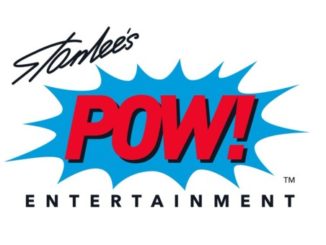Stan Lee premiered at the Tribeca Film Festival earlier this week and is now available on Disney+ starting today.
It might not be much of a stretch to say that Stan Lee was one of the most influential figures in the pop culture zeitgeist from the latter half of the 20th century until now. As a writer and editor at Marvel Comics, he was one of the key creative forces that created a wave of superhero characters that are part of the pop culture landscape today.
Stan Lee, the documentary, takes a look at the man, building up a portrait of him with audio from various interviews he has given over the years to serve as narration. Jiro Dreams Of Sushi director David Gelb does masterful work in creating visuals to go along with Lee’s words. Not content in relying on just old photos and the occasional piece of comic book art to illustrate something that Lee’s narration is talking about, Gelb has cartoonish 3D models of Lee working in the Marvel Comics offices that his camera can slowly move around.
The son of European immigrant parents, Stanley Leiber virtually stumbled his way into a job at comics publisher Timely (later Atlas Comics) in the 1940s and by the 1050s ultimately managed to find himself writing much of their output – romance, western, horror, humor and science-fiction titles. Growing disenchanted with his work, under orders to create a new superhero that could possibly compete with the new batch of heroes coming from rival publisher National Comics (now known as DC Comics) and the urging of his wife, Lee, in collaboration with artist Jack Kirby to create the Fantastic Four. He quickly followed that comic’s success with more characters who would be embedded into pop culture – Spider-Man, the Incredible Hulk, Thor, the X-Men and more.
But this movie is also the story of Stan Lee as told by Stan Lee, and so one should approach it with at least a note of skepticism. Lee, to both his own and Marvel Comics’ advantage, was an innate promoter. And by pushing himself out into the spotlight the way he did, he became the de-facto prime motivating force behind the company in the public’s eyes and he did nothing to change that misconception. Some would say that he was a glory hound who routinely stole credit from his artist collaborators, most notably Stave Ditko and Jack Kirby. Gelb doesn’t necessarily shy away from this side of Lee, but his film is in no rush to confront it either. )The elder abuse Lee suffered from in his final years goes unmentioned.) It is only close to the end of the documentary that the issue of the disputed authorship of some of the Marvel’s most iconic characters comes up in the form of a radio interview with Kirby that Lee drops in on that gets a little heated. The exchange keeps the project from being a complete hagiography, but those who are looking for a more complex examination of Lee and his place in pop culture may want to look elsewhere.





